|
|
|
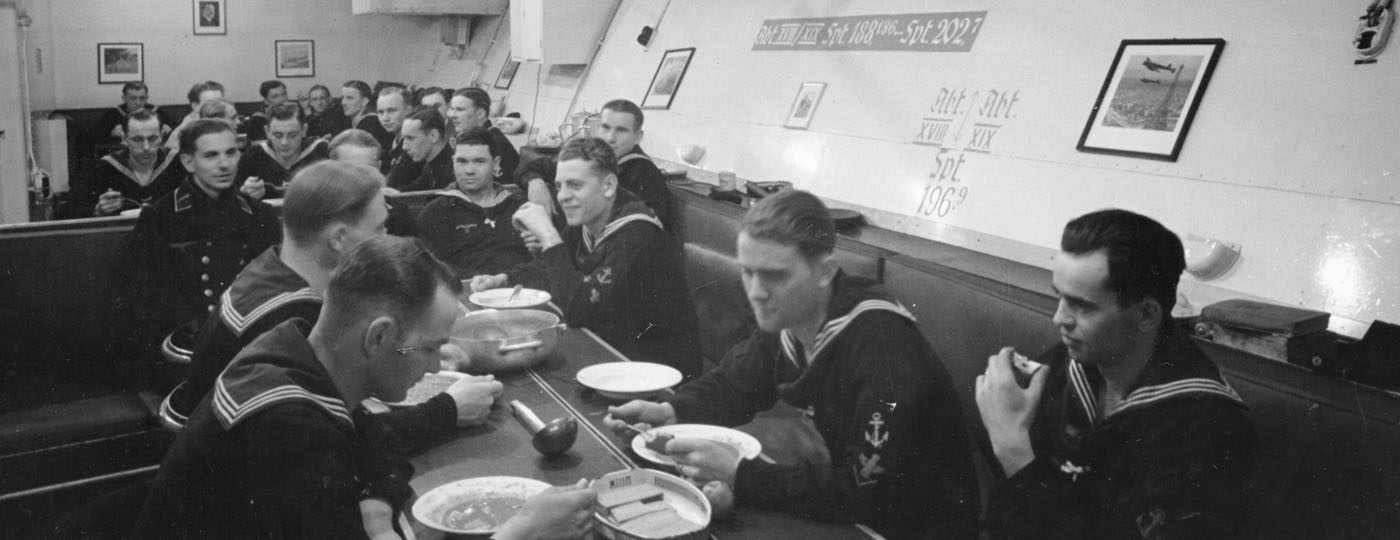 |
| |
The Crew
Here are the stories of some of the Bismarck crew. There are more stories in our book.
Stories from Volume 1.1
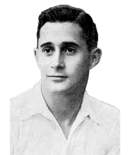 |
Heinz Aengeneyndt came on board the Bismarck as a young officer in 1940 and was deployed as a communication officer in the Aft artillery calculation center.
Read his story |
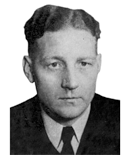 |
The turret commander of the secondary artillery, Paul Bube, survived the sinking of the Bismarck, but was unable to get rescued by one of the British ships and died at sea.
Read his story |
| |
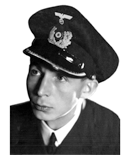 |
Friedrich Cardinal survived the heavy fire at the front position in the last battle, but in the water he took his own life in a seemingly hopeless situation.
Read his story |
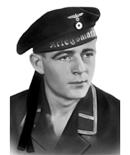 |
Kurt Hendrich became a father a year before the sinking. While he did not survive the final battle, a good friend with whom he smoked a last cigarette on board was able to escape.
Read his story |
| |
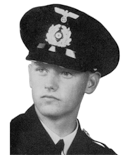 |
Jörn Jaap was a young midshipman and still training to be an officer when he came to the Bismarck. The command was intended to provide front-line experience.
Read his story |
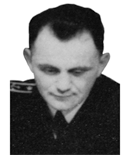 |
Franz Miodonski lived for the navy, in which he had served since 1925. However, his relationship and son suffered from the constant absence of his seafaring father.
Read his story |
| |
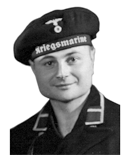 |
As the only son, Gerhard Oesper was supposed to take over his parents' farm, but he wanted to see more of the world and volunteered for service in the navy.
Read his story |
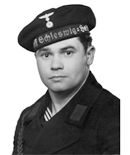 |
Josef Würzinger from Bavaria joined the navy in 1937. When the Bismarck was in the Baltic Sea, he met a girl from Danzig, whom he married in April 1941. After only 45 days of marriage, Josef Würzinger died.
Read his story |
|
|
 Seaman personnel on work duty (stowage of supplies). |
|
Stories from Volume 1.2
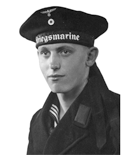 |
The cheerful Austrian Alois Bacher from Styria wanted to leave life as a farm hand behind him and therefore volunteered for the navy.
Read his story |
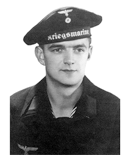 |
Hans Fürbringer's mother never got over the early death of her son; decades later, she still struggled to keep her composure while walking with her grandson; he reminded her too much of her fallen son.
Read his story |
| |
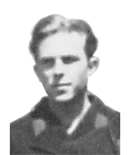 |
Friedrich Junghans survived the sinking of the Bismarck. He gave his dog tag to his British rescuer. We tell both stories.
Read his story |
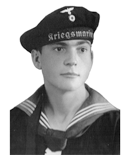 |
Helmut Kastner's brother Heinz served on a destroyer that accompanied the Bismarck at the beginning of the operation.
Read his story |
| |
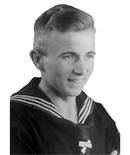 |
As the son of a professional soldier, Rudi Kaczmarek and his family moved many times. He experienced the beginning of the war in 1939 as a working man and decided to voluntarily join the navy at that time.
Read his story |
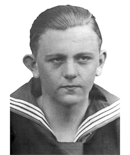 |
17-year-old Gerhard Kettenhofen came to the Bismarck after his basic training in April 1941, just two days before departure.
Read his story |
| |
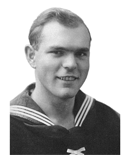 |
Kurt Langerwisch from Brandenburg an der Havel was an enthusiastic canoeist and had been in the navy since 1936. He survived the sinking of the Karlsruhe and Bismarck. After the war he worked as a teacher and director in the GDR.
Read his story |
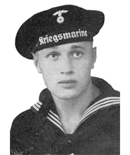 |
Friedrich Linnemannstöns was a trained carpenter from Beckum in Westphalia. His love of the water led him to the navy. Immediately after basic training in April 1940, he joined the Bismarck.
Read his story |
|
|
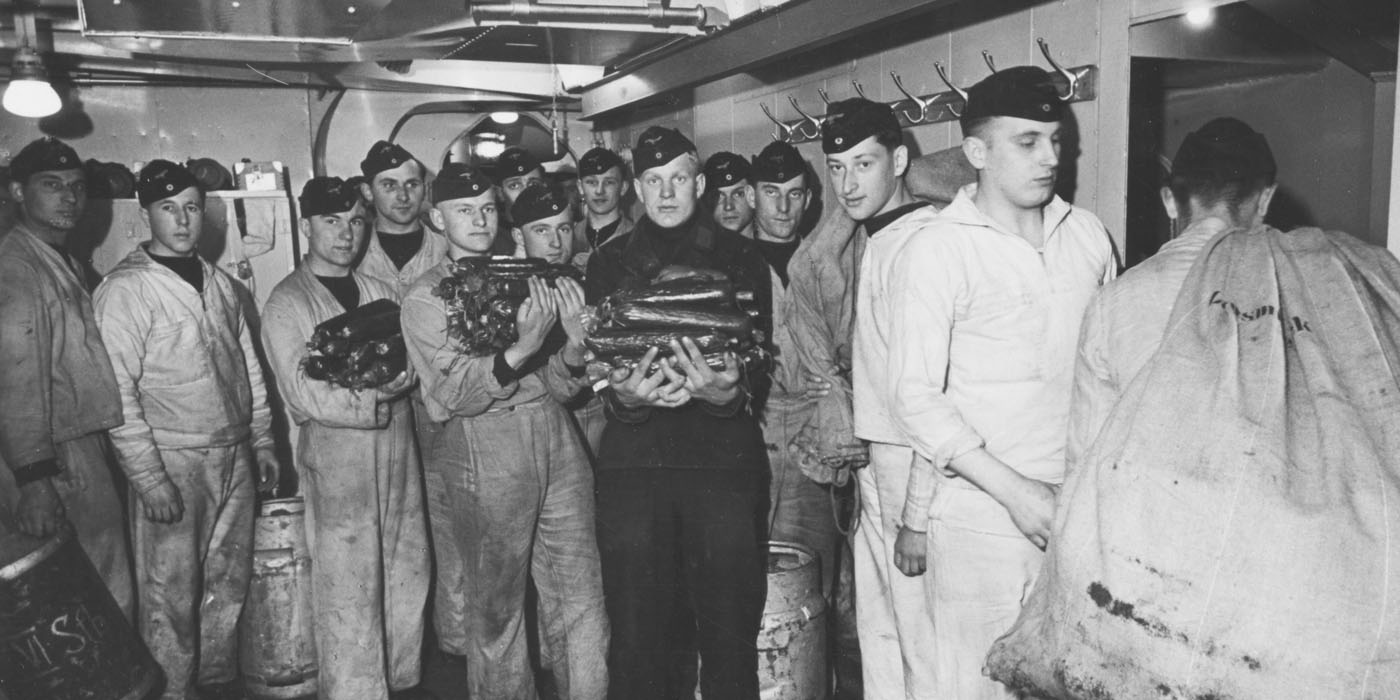 Seaman personnel on work duty (stowage of supplies). |
|
Stories from Volume 1.3
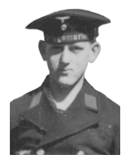 |
The young East Prussian Ernst Mareck was a trained gardener before he volunteered for the navy. During his training he met a girl in Danzig.
Read his story |
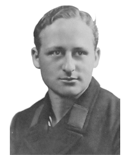 |
Otto Maus was one of the few survivors of the sinking. He and Walter Lorenzen were picked up by the weather observation ship Sachsenwald.
Read his story |
| |
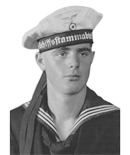 |
Karl Mihun from Graz (Austria) had already survived the sinking of the cruiser Karlsruhe when he came to the Bismarck and served in the air defense.
Read his story |
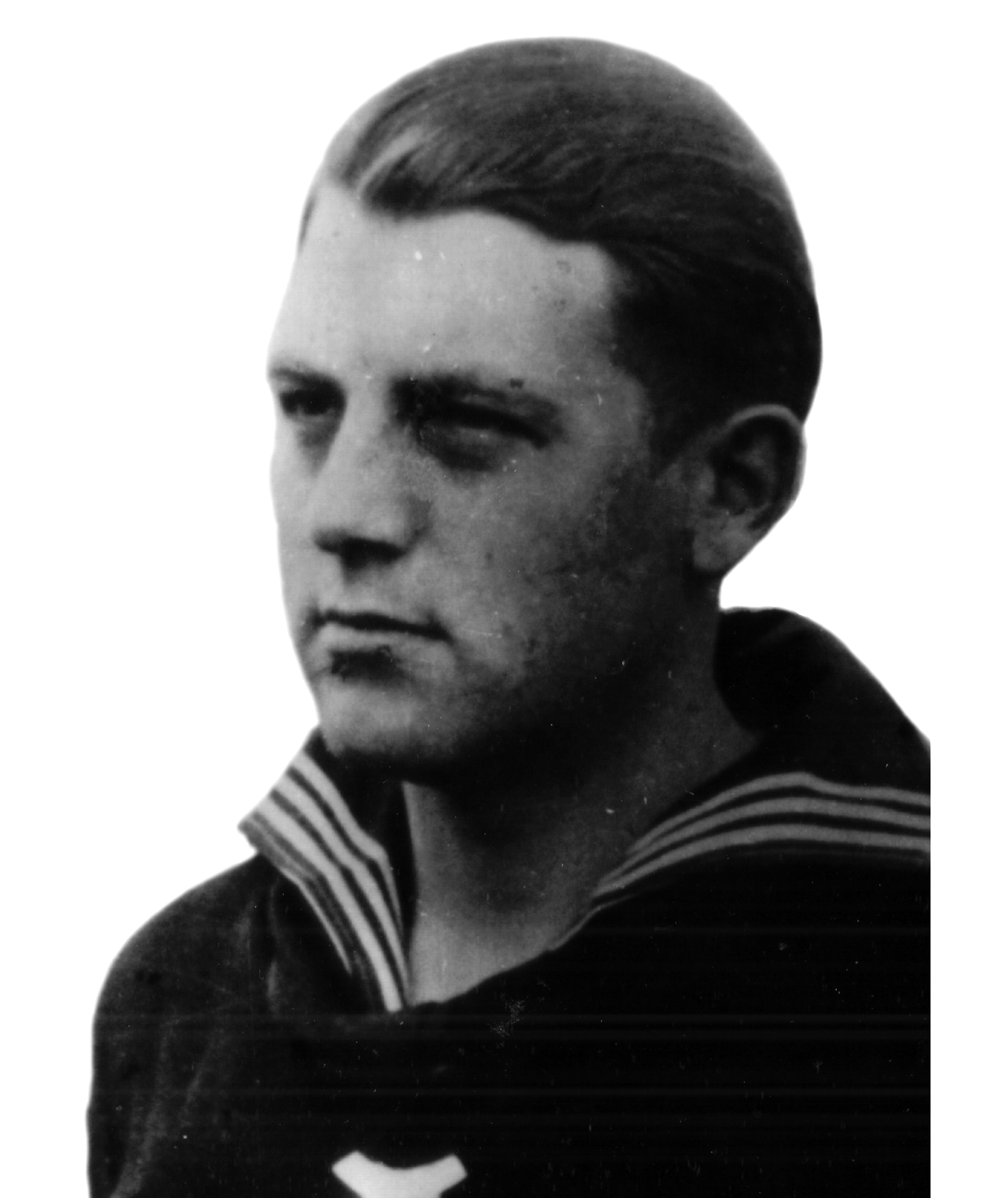 |
The Rhinelander Werner Rick experienced the beginning of the war on the old warship Schleswig-Holstein. He was already a father of two when he was killed at the age of 20.
Read his story |
| |
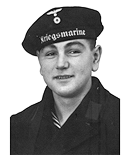 |
Kurt Schnetter's early death hit his mother particularly hard. Her greatest treasure were the few letters from her son, with which she was buried years later, in accordance with her wishes.
Read his story |
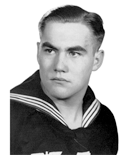 |
The sturdy Bamberg able seaman Michael Usselmann died from his severe wounds on May 27, 1941 at the Bismarck's combat aid station.
Read his story |
| |
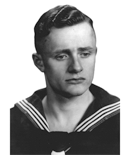 |
Karl Weise had to repeat his basic training, which he had begun in April 1939, in October due to illness before he was trained as a rangefinder and was assigned to the Bismarck.
Read his story |
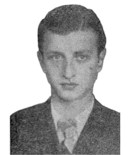 |
Heinz Ziegler from Lübeck and his sister lost both their parents at an early age. While she emigrated to the USA to stay with relatives before the impending war, he joined the navy.
Read his story |
|
|
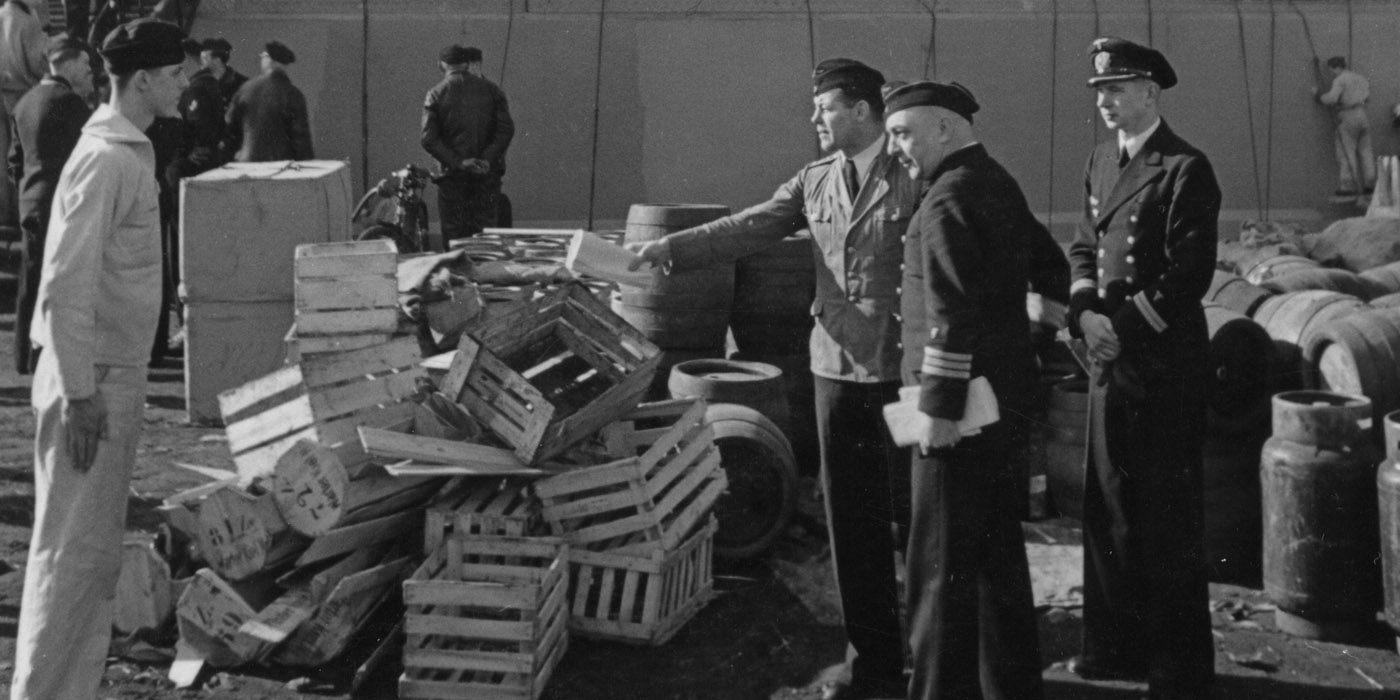 The ships' administration officers, Lieutenant Commander (V) Rudolf Hartkopf and First Lieutenant (V) Günther Tischendorf, together with an administration sergeant, coordinate the loading of the Bismarck on March 15, 1941 in Kiel's Scheerhafen. |
|
Stories from Volume 2
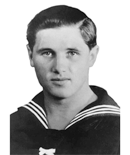 |
Radio petty officer Helmut Baltz experienced his baptism of fire on board the destroyer Georg Thiele, which was lost during the occupation of Norway. He then had to continue fighting on land.
Read his story |
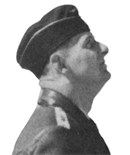 |
Hans-Günther Busch went to the navy after licensed as a doctor. Together with his brother he survived the sinking of the sail training ship Niobe. Years later he became the Chief Ships Doctor aboard Bismarck.
Read his story |
| |
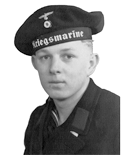 |
Egon Bey joined the navy against his father's wishes. His 19th birthday happened to be on May 26, 1941, one day before the sinking of the Bismarck in which he lost his life.
Read his story |
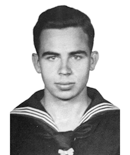 |
When the war broke out, Albin Eggerstedt had to end his apprenticeship as a musician early. In order to be able to continue working as a musician, he signed up for a career as a musician in the Navy.
Read his story |
| |
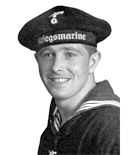 |
Ernst Friedrich grew up as an illegitimate child with his mother in simple circumstances. After an apprenticeship as a plumber, he joined the navy and became an artillery mechanic.
Read his story |
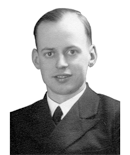 |
For Lieutenant (W) Bruno Köhler a dream came true when he got to serve aboard the Bismarck. Therefor he especially had changed command with a friend of his.
Read his story |
| |
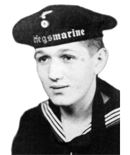 |
The sailor Karl Kuhn was only 17 years old when he came to the Bismarck. He served in one of the ship's offices. With a lot of luck, he survived the sinking of the ship and was taken prisoner of war by the British.
Read his story |
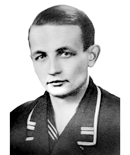 |
The chief mechanic's mate (A) Hans-Hermann Schmidt from Celle began his career in the navy in 1934. He served on the battleship Admiral Graf Spee for several years before being trained as a petty officer and coming to the Bismarck.
Read his story |
|
|
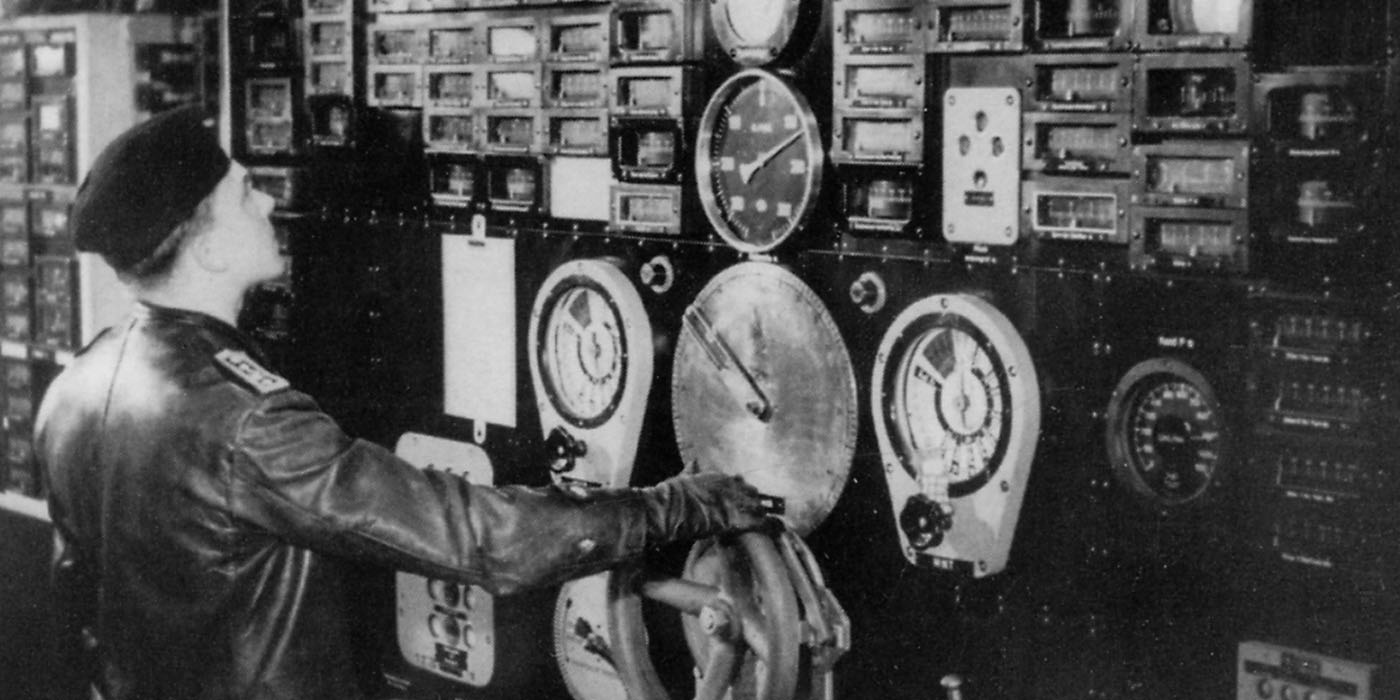 Turbine control station on the battleship Tirpitz |
|
Stories from Volume 3
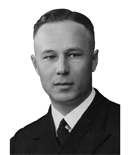 |
Commander Paul Ascher from Brandenburg served on the Admiral Graf Spee which was scuttled in Uruguay in 1939. He escaped from internment and returned to Germany where he served on the Fleet Staff. As a half-Jew he avoided the effects of the Nazi racial mania by a special dispensation by Hitler.
Read his story |
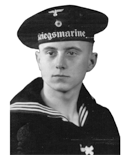 |
Stoker 2nd Class Werner Böttner from Hörselgau, Thuringia was trained as a metal worker. Shortly after the war broke out, he joined the Kriegsmarine. Bismarck was his first and last seagoing assignment.
Read his story |
| |
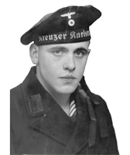 |
Stoker 2nd Class Herbert Engmann from Hamburg was transferred to another duty shortly before Bismarck started on Operation Rheinübung.
Read his story |
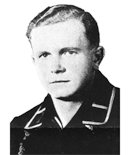 |
Machinist’s Mate Gerhard Gränitz from St. Egidien, Saxony joined the Kriegsmarine after finishing job training as a metal worker. One of his crewmates hailed from the same small village as he.
Read his story |
| |
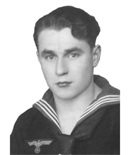 |
Stoker 2nd Class Herbert Jahn from Nünchritz, Saxony, witnessed horrific things during Bismarck’s final battle but was fortunate to have survived and been rescued by the RN. For the next six years he was a British Prisoner of War.
Read his story |
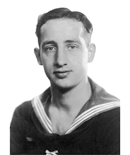 |
Right after his graduation from the technical course and his promotion, Machinist’s Mate Hans Luchs from Düsseldorf was sent straight to the Bismarck while she was still under construction at Blohm & Voss. In April 1941 he sent his family one last letter.
Read his story |
| |
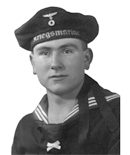 |
Stoker 3rd Class Richard Rebhan from Lindenau, Thuringia was drafted shortly after his 17th birthday. Originally he had intended to join the Merchant Marine, but the outbreak of the war prevented him. He died at the age of 17.
Read his story |
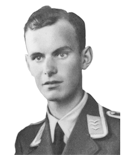 |
Staff Sergeant Werner Seeliger from Silesia was with the small Luftwaffe contingent which manned and maintained Arado Ar 196 seaplanes. He piloted the plane T3+MK.
Read his story |
| |
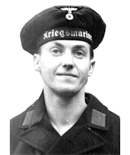 |
Stoker First Class Erich Seifert from Frauenreuth, Thuringia served on the cruiser Karlsruhe which was sunk during the invasion of Norway. However, he did not survive Bismarck’s final battle. He was last seen in the burning superstructure of the sinking ship.
Read his story |
|
|
|
 Tailoring workshop of the Bismarck in the battery deck of Section VIII. |
|
Stories from Volume 4
 |
Arthur Meier was the personal steward for the captain of the battleship Bismarck. Before that, he had managed the Rote Mühle dance palace in his hometown of Hanover, among other things.
Read his story |
 |
After completing his tailoring apprenticeship and a short working period Horst Bannasch, born in Königsberg in 1921, applied for a job as a civilian employee in the Navy. He came on board the Bismarck in mid-January 1941.
Read his story |
|
|
| |
Contact |
Updates |
Legal Notice |
German
|
|
|
|
|